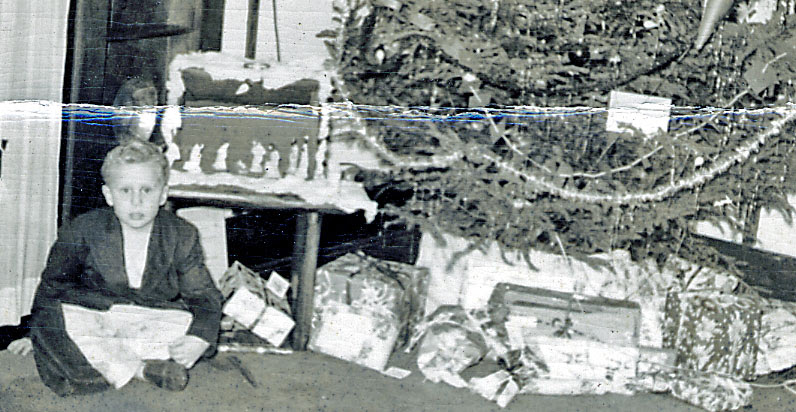The Spirit of Toys

In the early 50s, I remember sitting in my PJs under a spruce Christmas tree. I’m opening a pile of presents from my mother. These are the presents my mother never got as a young girl. She grew up in a family that had little use for manufactured things. I’m embarrassed at how many toys are spread out around me and gather them up and hide them in my room. I know my neighborhood playmates have few if any store-bought toys and that most of their gifts are necessities like hand-me-downs, clothing, or playthings fashioned from found objects.
Across the street, Vick’s father has a small engine repair shop and Vick has a collection of toys that I envy. Most of them are old tools or things fashioned from the parts pile behind his Dad’s shed.
My toys are store-bought and wrapped in their own packaging and then re-wrapped in seasonal paper. Mom watches anxiously as I open each present to see if I like it as much as she would have when she was my age. I try not to disappoint her.
My mother’s parents raised her to appreciate the beauty of nature and the richness of fine art. A gift from my mother’s mother might have been a beautifully illustrated book of Nordic Myths or a perfectly ripened papaya or mango. But these were hardly the gifts my mother hoped for as a young girl. Rather, these were the gifts her own mother wanted her to want.
My Morrisville stepfather came from a practical culture where each gift was an admission ticket to a new level of trust and maturity, like a flashlight, your own tool set, a bicycle, a .22 rifle, a razor, or a car to be rebuilt.
I still think that gives for children should convey affection and trust and are probably not found at Walmart or Best Buy. A gift should lead a child somewhere – bring the child a new experience. Such gifts will grow in meaning and value with the passage of time, even if they disappoint at first.
For the most part, I think today’s toys aren’t really toys at all. Video games are addictive instead of transformative and have little, if anything, to teach us. Unlike the toys of earlier times, they can’t even be passed down; they break and must be discarded since they can’t be repaired. Their packaging probably costs more than the toy itself. These sad toys that haunt our landfills and litter our oceans leave our children no better off in spirit.
When I was eight, I was given my grandfather’s pocket watch. It has his initials, which are also my own. I rose to the occasion but then squirreled it away and didn’t look at it again for a decade. There were books I only came to love much later in life. And today, I can’t remember what those specific toys actually were that I opened so long ago with such embarrassment.

